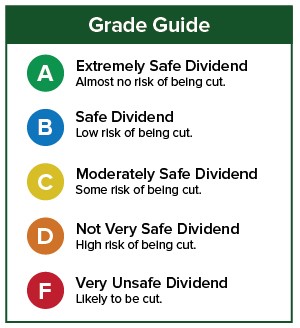You may have never heard of B&G Foods (NYSE: BGS), but there’s a good chance you’ve got some of the company’s products in your kitchen right now.
B&G Foods produces name-brand food products, such as Green Giant frozen vegetables, Mrs. Dash spices, Ortega tortillas and taco shells, SnackWell’s cookies, and many more snacks sold in grocery stores across the country.
The company buys struggling food brands and revamps them so that their sales resume growth.
Today it sports a hefty 11.67% dividend yield.
So will this double-digit yield have investors echoing the Green Giant’s signature “Ho, ho, ho”? Or will they say “No, no, no” instead?
Let’s find out…
Unhealthy Cash Flow
My mom always told me that I needed to eat plenty of fruits and vegetables to grow up healthy and strong.
Today, SafetyNet Pro tells us that dividends need plenty of free cash flow to thrive – and growing free cash flow is even better.
Unfortunately, B&G Foods doesn’t have it. This year, free cash flow is expected to fall 27.46% from $167.5 million in 2018 to $121.5 million in 2019.
Worse yet, free cash flow won’t cover B&G Foods’ dividend payment of $125.93 million. That means that B&G Foods is paying out more money in dividends than it’s bringing in the door.
Next year doesn’t look much better. In 2020, analysts expect B&G Foods to generate $125.93 million.
While cash flow estimates are moving in the right direction, it’ll barely cover today’s dividend obligation. And B&G’s payout ratio for 2020 will be well above SafetyNet Pro’s 75% comfort level.
A Disappointing Dividend Menu
After cutting its dividend during the financial crisis in 2009, B&G Foods has been raising its dividend every year since 2011. However, if free cash flow doesn’t heat up, a cut, not a raise, could be on the menu soon.
B&G Foods’ dividend isn’t safe. And it doesn’t look like its dividend safety rating will be getting an upgrade anytime soon.
Dividend Safety Rating: D
Good investing,
Kristin
P.S. If you have a stock whose dividend safety you’d like to have analyzed, please leave the ticker symbol in the comments section.

